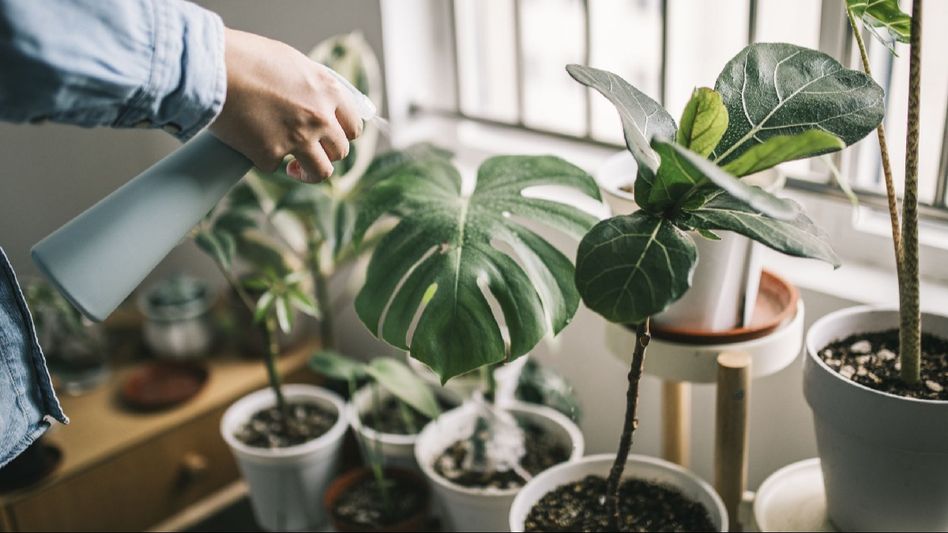Green thumb guide: Tips for thriving houseplants
Houseplants not only add a touch of natural beauty to indoor spaces but also provide numerous health benefits, from purifying the air to reducing stress levels. However, keeping houseplants healthy and thriving requires proper care and attention.

Houseplants not only add a touch of natural beauty to indoor spaces but also provide numerous health benefits, from purifying the air to reducing stress levels. However, keeping houseplants healthy and thriving requires proper care and attention. With the right approach and a few simple strategies, anyone can become a successful plant parent.
1. Proper Watering:
Watering is perhaps the most critical aspect of houseplant care. Different plants have varying water needs, so it's essential to research each plant's specific requirements. In general, most houseplants prefer soil that is consistently moist but not waterlogged. Allow the soil to dry out slightly between waterings to prevent root rot. Use room temperature water and ensure adequate drainage to prevent water from accumulating at the bottom of the pot.
2. Adequate Lighting:
Light is essential for the photosynthesis process, which is crucial for plant growth and development. Place your houseplants in locations where they can receive the appropriate amount of light for their specific needs. Some plants thrive in bright, indirect light, while others prefer low-light conditions. Monitor the light levels in your home and adjust the placement of your plants accordingly. Supplemental artificial lighting can also be used for plants that require more light than your home can provide.
3. Proper Humidity:
Indoor environments tend to have lower humidity levels than outdoor environments, which can be challenging for some houseplants, particularly tropical varieties. Increase humidity around your plants by misting them regularly with water or placing a humidifier nearby. You can also create humidity trays by placing pebbles in a shallow tray filled with water and setting your plant pots on top. Grouping plants together can also help to create a microclimate with higher humidity levels.
4. Regular Pruning and Maintenance:
Pruning is essential for maintaining the health and appearance of your houseplants. Remove dead or yellowing leaves, as well as any spent flowers or stems. Pruning encourages new growth and prevents disease and pest infestations. Additionally, regularly dusting the leaves of your plants with a soft, damp cloth helps to keep them clean and free from debris, allowing them to photosynthesize more efficiently.
5. Proper Potting and Soil:
Choose pots with adequate drainage holes to prevent waterlogging and root rot. Use a high-quality potting mix that is well-draining and nutrient-rich. Repot your plants as needed to provide them with fresh soil and room for root growth. When repotting, choose a pot that is slightly larger than the current one to allow for future growth. Be gentle when handling the roots to avoid damaging them.
6. Fertilizing:
Houseplants benefit from regular fertilization during the growing season to provide them with essential nutrients for healthy growth. Choose a balanced, water-soluble fertilizer and dilute it to half strength to avoid over-fertilizing, which can damage the roots. Fertilize your plants every two to four weeks during the growing season, and reduce or stop fertilizing during the winter months when growth slows down.
7. Monitor for Pests and Diseases:
Keep an eye out for signs of pests such as aphids, mealybugs, spider mites, and scale insects, as well as common diseases like powdery mildew and root rot. Inspect your plants regularly for any unusual symptoms such as yellowing leaves, wilting, or spots. If you notice any issues, take appropriate measures to treat the problem, such as removing affected leaves, pruning infected areas, or applying natural or chemical pest control solutions.
In conclusion, maintaining healthy houseplants requires attention to detail and a proactive approach to care. By providing the right balance of water, light, humidity, and nutrients, along with regular pruning and monitoring for pests and diseases, you can ensure that your houseplants thrive and bring beauty and joy to your indoor spaces for years to come.
Copyright©2025 Living Media India Limited. For reprint rights: Syndications Today









